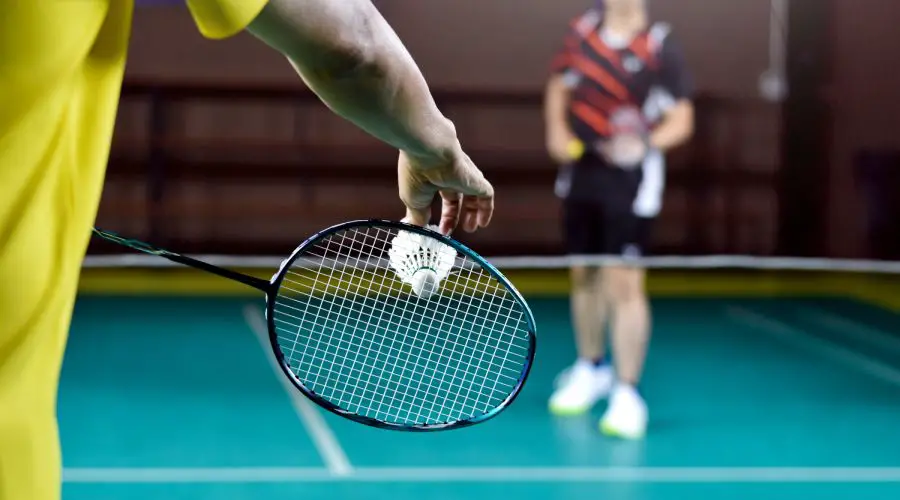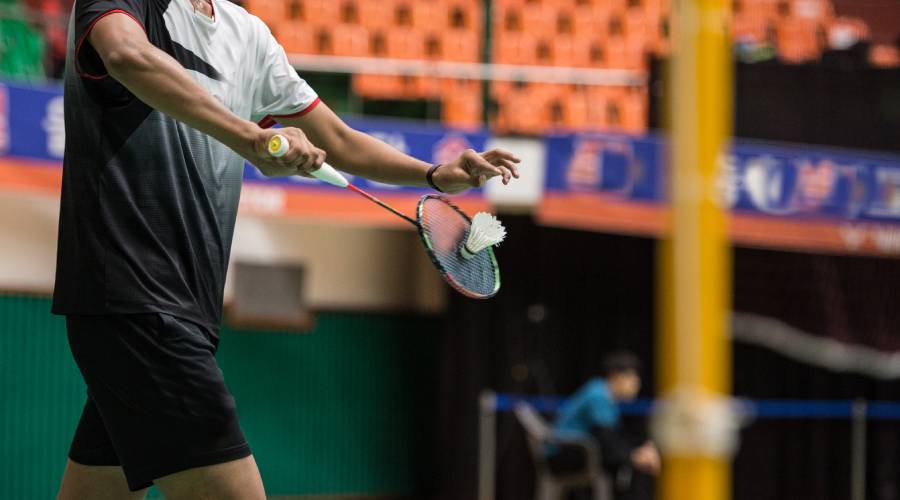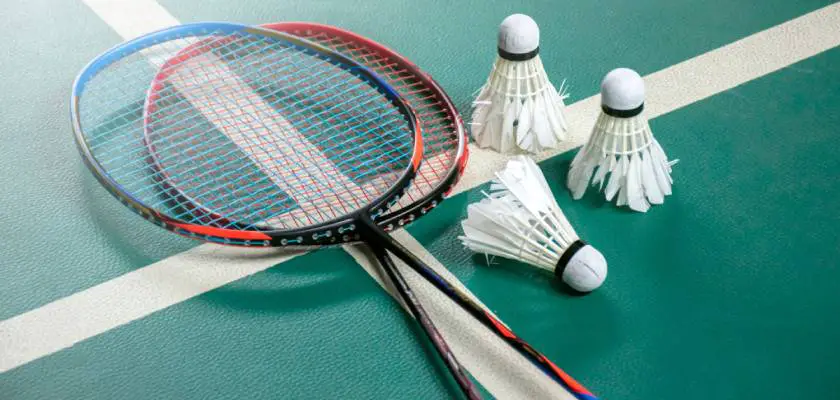Badminton is an Olympic sport that originated in India and later became popular in Europe and the rest of Asia.
The sport is played with rackets and a shuttlecock, which must be thrown over a net that divides the court into two sides.
Well, if you’ve ever wondered how this peculiar game works, then here’s the right place to clear up all your doubts and understand the rules.
In this complete and up-to-date guide, we’ll introduce you to the basic fundamentals, how matches work and the history of badminton.
Check it out 👇
Badminton history
Practices similar to badminton were already played in past civilisations, specifically in ancient times.
However, modern badminton as we know it today has its historical roots in 19th century British India.
At that time, a game called poona was popular in the Asian country. It involved a shuttlecock made of goose feathers and a racket. All the movements were carried out on a rectangular court.
Some British soldiers took a liking to the sport and, on their return to England, introduced it to European soil. As a result, poona began to develop and gain more and more popularity.
As a result, the game was officially established in the UK at parties held at Badminton House. This was a large mansion owned by the Duke of Beaufort. Hence the name badminton.
At the beginning of the 20th century, the practice went from mere entertainment to a structured sport. Rules were officialised and a world body was even created to regulate the sport.
The Badminton International Federation (BWF) was founded in 1934. Since then, the body has played a key role in organising and promoting the sport around the world.
Badminton’s success was such that it was not long before it was included in the Olympic Games. In 1972, it was included as a demonstration sport. From 1992 onwards, it was consolidated as an official sport.
Asian countries such as China, Indonesia and South Korea have dominated the international badminton scene, producing some of the best players on the planet. In Europe, Denmark stands out.
How does badminton work?

Badminton is a sport played in individual matches (singles) or in teams (doubles), the aim of which is to score points by making the shuttlecock, made of goose feathers or synthetic materials, touch the opponent’s ground.
Athletes use light, aerodynamic rackets to hit the shuttlecock with different levels of intensity, direction and force.
The court is rectangular, divided by a net suspended at 1.55 metres for singles matches and 1.524 metres for doubles. The side and back lines, together with the service lines for doubles matches, delimit the court.
In terms of how the match works, a badminton game is played in a “best of three sets” system, with each set going to 21 points (except for the third set, the tie-break, which can be won with 15 points).
There are breaks between sets and changes of sides when the score reaches half of the total points in each set, just like in beach volleyball.
The serve is made from a demarcated zone on the court, alternating between sides and players or teams after each point.
Scoring occurs when the shuttlecock touches the ground on the opposite side of the court, and if it touches the line it is considered in.
There are specific rules for avoiding faults, such as not touching the net, not touching the shuttlecock twice in succession and not stepping on the line during the service. After a fault, the point is awarded to the opponent.
What does a badminton court look like?
The badminton court is rectangular and has specific dimensions. It measures 13.4 metres long by 5.18 metres wide for doubles matches. However, for singles matches, the width is reduced to 5.18 metres.
A net is suspended in the centre of the court, extending to the side lines. The height of the net is 1.55 metres for singles matches and 1.524 metres for doubles matches. This net acts as a barrier separating the courts from the players or teams.
The court also has boundary lines, including the side and back lines for singles matches, and the service lines for doubles matches. These lines are key to determining whether the shuttlecock has touched the court or not during play.
Badminton rules

- Duration | Badminton matches are played in a best-of-three sets system, i.e. you have to win two sets to win the match. Each set lasts up to 21 points (except the third, if necessary, which only lasts 15);
- Scoring | A point is scored every time the shuttlecock touches the ground on the opponent’s court. There are, however, other ways of scoring: when the opponent hits the shuttlecock out of the court, when the opponent hits the shuttlecock into the net and it doesn’t pass to the other side, or when the opponent commits some kind of infraction (fault);
- Service | The service begins with a draw after the warm-up. The player or team that wins the draw chooses to serve first or receive first. The service alternates between the sides of the court and between the players or teams after each point;
- Service area | The serve must be taken within the service area, delimited by specific lines on the court. The player must remain with at least one foot inside this area during the hit;
- Blows | The shuttlecock must be hit below the waist. In addition, each side may only touch the shuttlecock once before passing it to the other side;
- Faults | In badminton, it is considered a fault if the player touches the net, if the shuttlecock touches any part of the athlete’s body other than the racket, if the player steps on the opponent’s side (trespassing), if the server misses the service movement or if the athlete touches the shuttlecock more than once before passing it to the other side;
- Breaks and change of sides | Breaks are allowed between sets. In addition, there is a change of sides when the score reaches half of the total points in each set.
Badminton equipment
The racket is the main piece of badminton equipment. Used by athletes, they are light and made of materials such as graphite, aluminium or steel – as well as having an aerodynamic shape to allow for precise movements.
The shuttlecock, also known as the shuttlecock, is the “ball” used in badminton. It can be made from goose feathers or synthetic materials.
Goose feather shuttlecocks are generally used at more advanced levels of play due to their more complex trajectory and more subtle touch.
Finally, there’s clothing. Athletes usually wear comfortable clothes such as shorts, shorts, skirts, t-shirts, tops, tank tops and specific trainers.
Badminton shots

- Smash | Powerful and fast shot, in which the player hits the shuttlecock from top to bottom, aiming to send it crashing to the opponent’s floor;
- Clear | Defensive shot in which the player throws the shuttlecock high in order to send it deep into the opponent’s court, with the aim of gaining enough time to recover on the court;
- Drop shot | Short, precise shot used to place the shuttlecock gently over the net, usually close to the front line of the opponent’s court;
- Drive | Fast shot in which the player attacks the shuttlecock horizontally, aiming for a fast, flat trajectory. It is a technique used to put pressure on the opponent;
- Net shot | A soft, controlled shot close to the net, used to let the shuttlecock fall into the opponent’s court after it has passed the net;
- Lob | Hit in which the player throws the shuttlecock high and behind the court, trying to cover up the opponent, often used as a response to an opponent’s smash.
That’s it! Now you know all about badminton and are ready to watch the matches at the Olympics. Did you like this content? Let us know what you think in the comments! And keep visiting us every day, see? 👊


